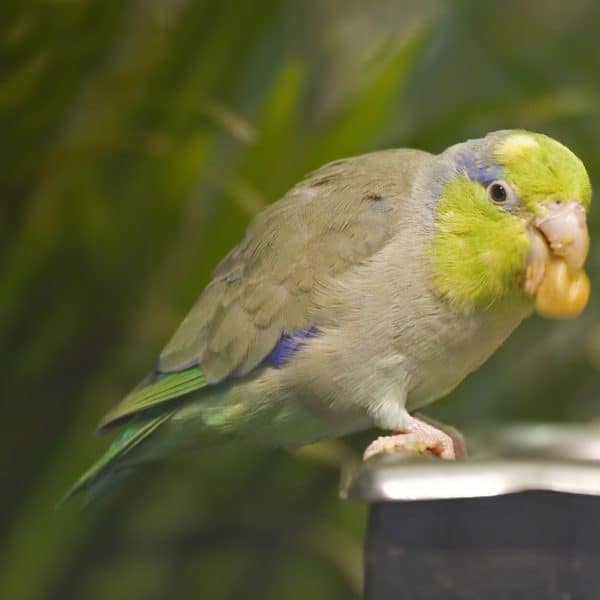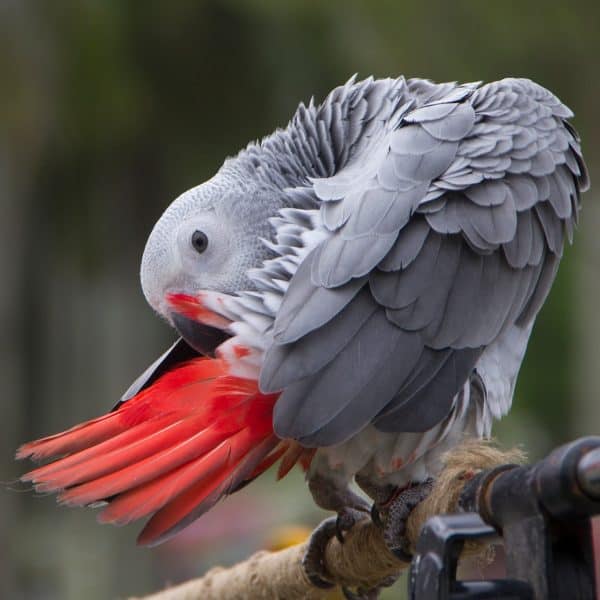
How Do I Stop My Bird from Screaming?
Last Updated on by Mitch Rezman
Why does my bird scream?
Boy if we had THE answer we’d be writing this from our yacht. But of course, I have to weigh in here. What got me thinking about the subject of “why birds scream,” is some recent web surfing.
I spend my days doing what many of you wish you could be doing, surfing the web for bird toys and parrot cages.
The magic of the internet enables us to shop the world. In order for us to provide the best possible shopping experience.
We look at lots of sites and products.
Pricing is important but not our priority.
The feel good information about parrots and general avian issues is the most important product we can offer. And we offer that for free. We like to know who’s selling what.
We also like to see how well they’re selling it i.e. is the site easy to navigate. Do they offer multiple payment choices and so forth?
But I digress – So here I am on the of a national chain of pet supply products. They have an FAQ for bird ownership. Something we always applaud. Well, I’m reading the list and one of the topics is…
Why is my bird screaming? No real explanation is offered and at the end of the paragraph, they recommend taking your parrot to a vet if screaming persists.
Yikers! Screaming parrots – vets – why?
Let’s look at this logically folks, not that parrots are logical but they are creatures of habit. One of the things we learned from Michelle Karras www.thepoliteparrot.com is silence means danger! If you have a flock of wild parrots in trees (in their natural environment) or even a flock of local wild birds in your backyard. On any given sunny day a flock of birds will make a lot of noise – it’s all about FLOCK. Chirp, chirp, scream, scream. What are they communicating about? Same things we do. “Find any food lately? Yeah, they had a great sale on worms about a mile from here.”
SILENCE means danger! If you’ve ever seen a hawk fly over a flock of wild birds, you swear you can hear the sound of the hawk’s wings flapping. That’s one of the reasons parrots come in so many colors. If they’re quiet and deep in a tree they are difficult to spot. When that danger passes its chirp, chirp, scream, scream. So again I ask, “is screaming a reason to run to the vet? I don’t think so.
Something we hear a lot of is – people will have a screaming bird (usually newbies) and the bird will scream for whatever reason. What does their human companion do? Yell SHUT UP! And what does the parrot do? SCREAM SOME MORE!
Again I fall back on my good friend’s logic. The bird screams, you scream back. Do you think there may be a slight chance that when you scream back the bird might be thinking “hey – this is great! Someone is finally squawking back at me “Hey SCREAM, SCREAM, please scream back some more, I’m lonely you’re my flock and I need to talk to someone than you?”
Begin to see where I’m going with this grasshopper? OK so now you know one of the whys.
Here’s a little tip from Michelle Karras www.thepoliteparrot.com that may work for you:
Excessive screaming is a learned behavior that we teach our birds. Covering your feathered companion with a blanket teaches him or her that you will cover the cage when a scream gets out of hand.
Yelling at a screaming parrot gives the parrot the attention it seeks. Ignoring a screaming parrot is not the answer either. Ignoring the bird’s screams could result in finding injuries too late (or water had run out). Options are to make sure all your Psittacines needs are satisfied.
Large hygienic cage, clean water, fresh food, working toys. Twelve hours of sleep (uninterrupted), softwood and other materials to chew, and plenty of exercise.
Start with a signal to stop loud parrots. Ring a cowbell (or bang a pot) in the room next to the screaming bird. They hear the bell (sound), they stop to listen, Show up from the other room while they are quiet to praise and reward. Set them up to succeed. Use a time when you know they are quite loud. Distract them with a new noise in the next room. As soon as they stop to listen, appear, and praise.
Lengthen the time between the signal and your appearance each time. Try and take a whole day at first and only work with the parrot and the screaming. Initial rewards should be substantial, a known favorite treat. Use the same signal just before feeding fresh food. Wait until the parrot is noisy; give the signal, praise, and feed.
Not all parrots will quiet down for the same signal so you may have to try several noises before finding the one that works for you.
Note: Do not use your voice. They may try to mimic you.
Scream time is a time during the day when you allow your parrots to be noisy. This should be given somewhere between 3 p.m. and 7 p.m. each day. Encourage your parrots by playing stimulating music. Dance, sing, or scream along with them. Scream time should last no less than 15 minutes and no more than 1/2 hour each day.
Some parrots enjoy screaming to the vacuum, this is fine to encourage but play music as well. Find music that your parrot gets excited over. Use that same song every day for scream time. Change the music from time to time but be consistent overall. When Scream time is over, lower the music volume Talk your parrot down. Lower the music slowly, turn it off, and play their relaxation code music. Give them afternoon snacks when “cool down” is over.
Birds will wait for their “Scream Time” because they know they will be rewarded for their patience.
But you’re desperate you say, you need something to help shut the bird up before you go out of your mind. OK, so try this into something you need to plan for. For this exercise, you’ll need a few single servings of your birds’ favorite treat, a large saucepan, and a wooden spoon. Have the traits pot and spoon in another room with a bird that can see them preferably right around the corner.
When the birds start to squawk don’t say anything but go into the next room and bang on the pot – Bam, Bam, Bam. This will distract your bird momentarily briefly making him or her silent. Walk into the room with a cheerful voice praise the bird for their good behavior, the silence and give them the treat as a reward for the silence. Let me know how that works.
Author Profile
Latest entries
 The Traveling BirdJune 26, 2025Can You Name 5 Parrot Species That Are Living Wild in the USA?
The Traveling BirdJune 26, 2025Can You Name 5 Parrot Species That Are Living Wild in the USA? Bird BehaviorJune 26, 2025How is it Parrots Are Problem Solvers Social Animals and Even Use Tools?
Bird BehaviorJune 26, 2025How is it Parrots Are Problem Solvers Social Animals and Even Use Tools? Bird & Parrot AnatomyJune 25, 2025How a Tiny Chemical Modification Makes Parrots Nature’s Living Paintings
Bird & Parrot AnatomyJune 25, 2025How a Tiny Chemical Modification Makes Parrots Nature’s Living Paintings PigeonsJune 20, 2025How Do Parrots Thrive in Cities Outside Their Native Habitats?
PigeonsJune 20, 2025How Do Parrots Thrive in Cities Outside Their Native Habitats?


